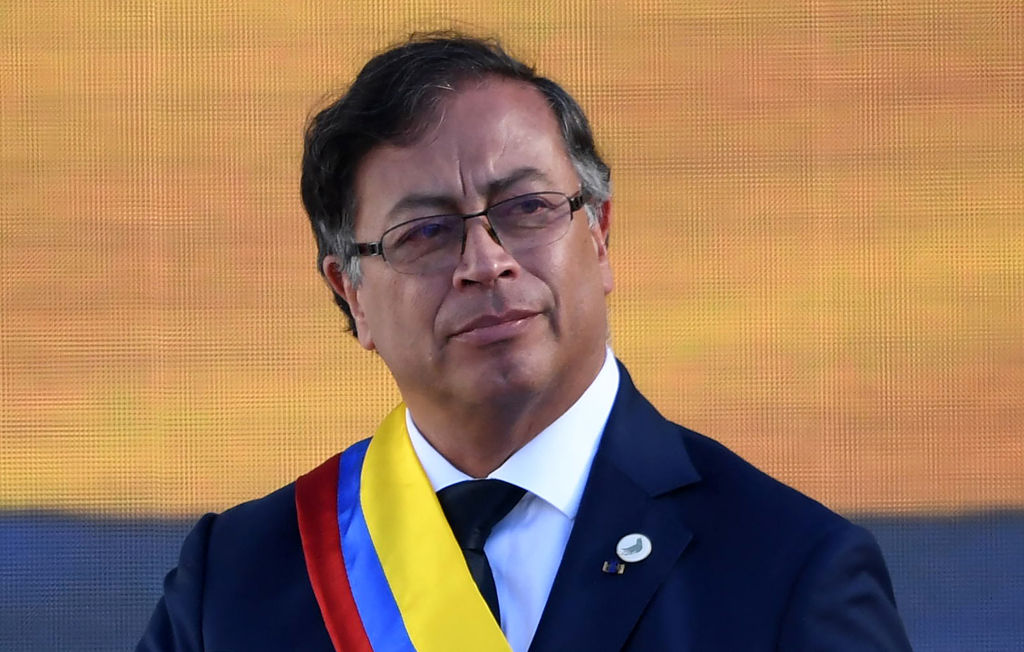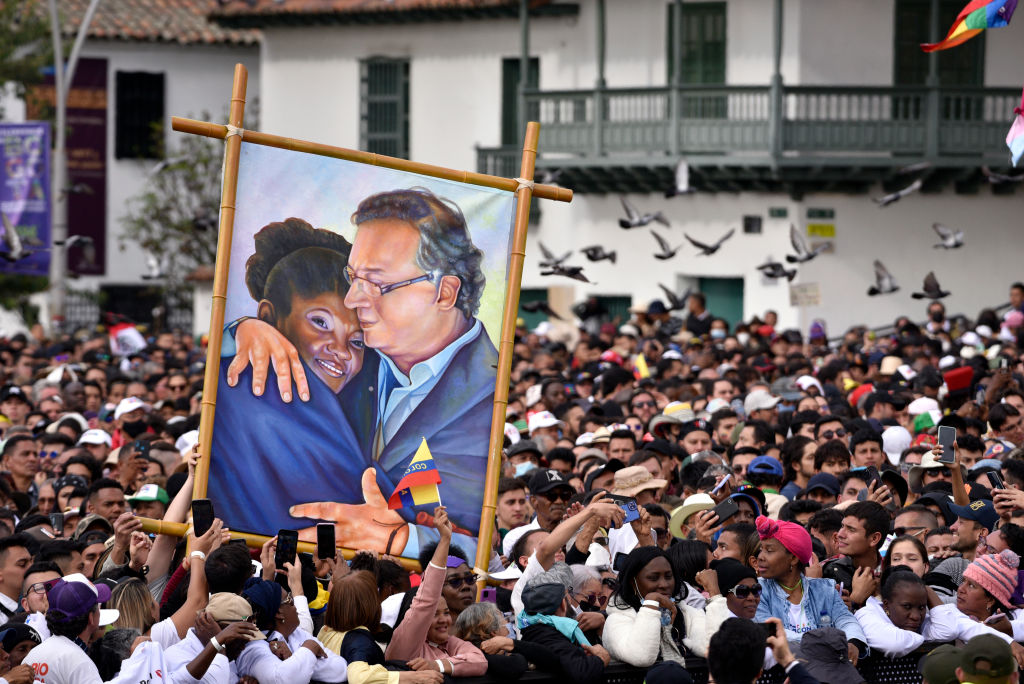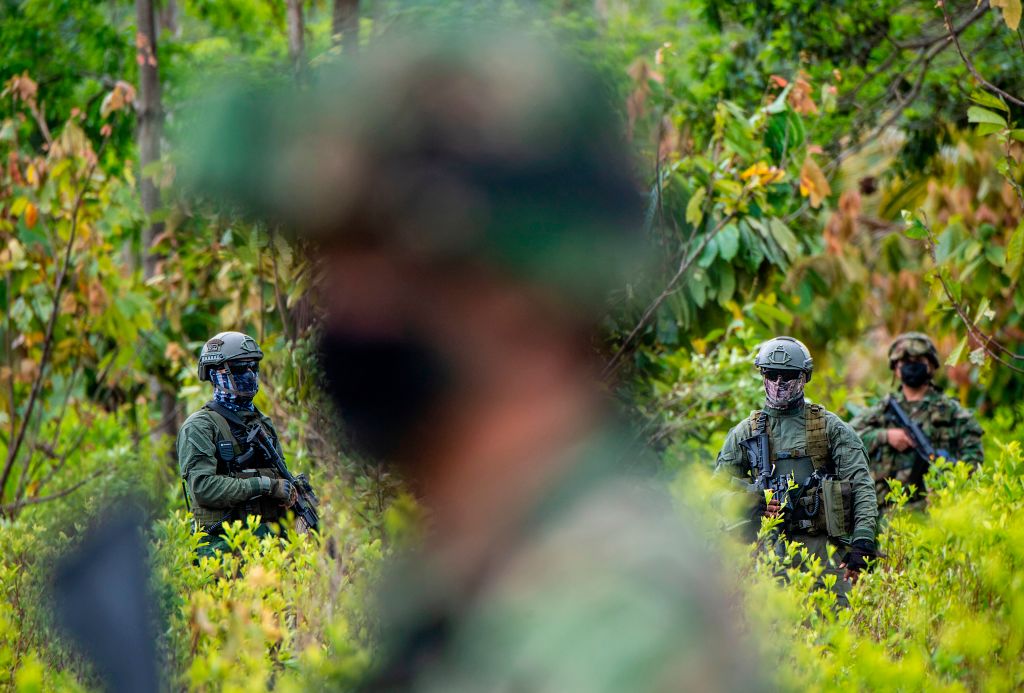
Following a historic election victory in June, Colombia’s first ever leftist president, Gustavo Petro, assumed office Sunday before a crowd of hundreds of thousands. He pledged to “bring to Colombia what it has not had for centuries, which is tranquility and peace.” Having campaigned on a radical agenda to redistribute wealth, end the war on drugs and tackle the climate crisis, Petro is looking to break with the country’s conservative politics.
But the new leader has the potential not only to transform the political landscape of Colombia, but to accelerate the decline of U.S. influence in the wider Latin America region, experts tell TIME.
Here, Petro’s agenda, and how it could change the U.S.’s role in Latin America:
Who is Gustavo Petro?
The former guerilla campaigned on a left-wing agenda, with plans to redistribute wealth, overhaul the police in light of a brutal crackdown in 2021 against mass protests over inequality and wean Colombia off oil and coal. Such proposals have stoked fear in Colombia’s conservative elites and wealthy investors alike.
Read More: No Oil Producer Wants to Be the First to Give Up the Fuel. Except Gustavo Petro’s Colombia
The 62-year-old Petro was a member of the now-disbanded M-19 guerilla group, the second-largest in the 1980s after FARC. Far-right groups were responsible for most paramilitary crimes during Colombia’s decades-long internal conflict but so were left-wing ones, according to the U.N. Many Colombians continue to associate leftist guerrilla movements with violence and instability.
More from TIME
Petro rejected armed struggle in the late 1980s, but these links have made him persona non grata in many circles. Nonetheless, he went on to secure positions in both houses of Congress, and was mayor of Bogotá from 2012 to 2016. Allegations of public service mismanagement resulted in his temporary removal from office in 2014 (Petro has said his removal was politically motivated). He first ran for president in 2018, but was beaten by the right-wing Iván Duque by 12 percentage points in the run-off ballot.

What will a Petro presidency look like?
Analysts tell TIME that in order for Petro to follow through on his agenda in the highly polarized Congress—his “Historic Pact” is the largest party but he relies on the support of a coalition—he will have to build consensus across the political spectrum. Petro has already displayed “positive signals of moderation, dialogue and pragmatism” in bringing more traditional parties into his coalition, says Ivan Briscoe, program director for Latin America at the International Crisis Group. The appointment of a well-respected, center-left finance minister, José Antonio Ocampo, may also help to assuage investor fears. “I’m not going to do crazy things or allow crazy things,” Ocampo said following his appointment.
Ocampo is proposing to finance many of Petro’s social justice policies with an immediate tax reform that could bring in up to $6 billion. Although this will help to a certain extent, some of Petro’s more ambitious policies—including the pledge to provide every unemployed Colombian with a state-funded job—will have to be “put on ice,” says Briscoe. The country is grappling with high inflation and near-record debt levels. Because Colombian presidents are restricted to a single four-year term, Petro’s presidency will be marked by a “movement in the direction towards a more equal society,” says Briscoe, rather than a full-scale revolution.
With the help of his running mate Francia Márquez, an environmental activist and now the country’s first ever Afro-Colombian Vice President, Petro mobilized voters who previously felt disenfranchised by traditional politics. His coalition cabinet comprises a “heterogeneous” mixture of both activists like Márquez and establishment-friendly politicians, says Christopher Sabatini, a senior Latin American research fellow at London-based think tank Chatham House. “He’s going to be wedged between the demands for social equality [borne of the 2021 protests] and a moderate and pragmatic cabinet.”
How could Washington’s role in the region change?
Under successive governments, the U.S. and Colombia have co-operated on fighting leftist guerilla movements, the war on drugs and regional affairs. This relationship won’t be “broken” during Petro’s presidency, says Sabatini, but it may well be “attenuated” by the new president’s approach to security and foreign policy.
Less than 48 hours after Petro’s victory, Biden called to congratulate the president-elect and pledged “to continue strengthening bilateral cooperation” between Washington and Bogotá. Just two weeks ago, Biden also dispatched a high-level delegation to meet with Petro. The talks were “positive,” said U.S. principal deputy national security adviser Jon Finer, but there would likely be future disagreements, particularly over drug policy. Petro wants to end the U.S.-backed war on drugs in Colombia that has seen billions of dollars in security spending, even as cocaine production tripled between 2010-2020.

Yet Washington’s intense display of initial outreach was, according to some analysts, a sign of its mounting concern for its diminishing influence in the region. Stalling U.S. investment in Latin America in recent years has upset allies—this feeling was on display at June’s Summit of the Americas, which was mired by snubs and political posturing before it even began. Under Petro, Colombia may well “fall out of Washington’s orbit,” Briscoe says.
Petro wants to restore diplomatic relations with Nicolás Maduro’s government in Venezuela—breaking away from the Washington-backed Juan Guaidó, who declared himself president in 2019. This change in policy could reignite commerce between the two neighbors and help tackle the border crisis—some 2 million migrants have fled to Colombia to escape Venezuela’s economic turmoil. And as other countries in the region, such as Argentina, enter into dialogue with Maduro, Washington will seem more out-of-step. “We’re going to see a resetting of the alliances within the hemisphere,” Sabatini says.
The economic relationship between the two countries is also set to change—Petro has pledged to reframe the U.S.-Colombia free-trade agreement to better protect domestic agriculture, and vowed to end new fracking projects and oil exploration. Colombia’s fossil fuel production comprises more than 40% of the country’s export revenues, with the U.S. one of its most significant customers. But the president won’t want to sever all ties, says Briscoe, as he will want to “maintain Colombia’s credibility on international financial markets” that are traditionally skeptical of socialist governments.
Briscoe says that, while Petro’s presidency offers Colombia the chance to redefine its relationship with the U.S., so too does it allow Washington the opportunity for a reset. Biden “should seriously contemplate ending the imposition of security policies [in the region], which supposedly serve U.S. interests, but for which the price is paid by those countries,” Briscoe says.
The U.S. has a long history of military and political interference in Latin American countries, particularly during the Cold War as Washington sought to suppress left-wing movements. In Colombia, the U.S. has for decades provided training, investment and support to the army in its fight against insurgencies—according to Human Rights Watch, this military aid bolstered far-right paramilitary groups and perpetuated human rights violations. Washington’s anti-narcotics policy in the region has fuelled violence further. “The U.S. puts in the money, but Colombia pays the price,” says Briscoe.
More Must-Reads from TIME
- Where Trump 2.0 Will Differ From 1.0
- How Elon Musk Became a Kingmaker
- The Power—And Limits—of Peer Support
- The 100 Must-Read Books of 2024
- Column: If Optimism Feels Ridiculous Now, Try Hope
- The Future of Climate Action Is Trade Policy
- FX’s Say Nothing Is the Must-Watch Political Thriller of 2024
- Merle Bombardieri Is Helping People Make the Baby Decision
Contact us at [email protected]